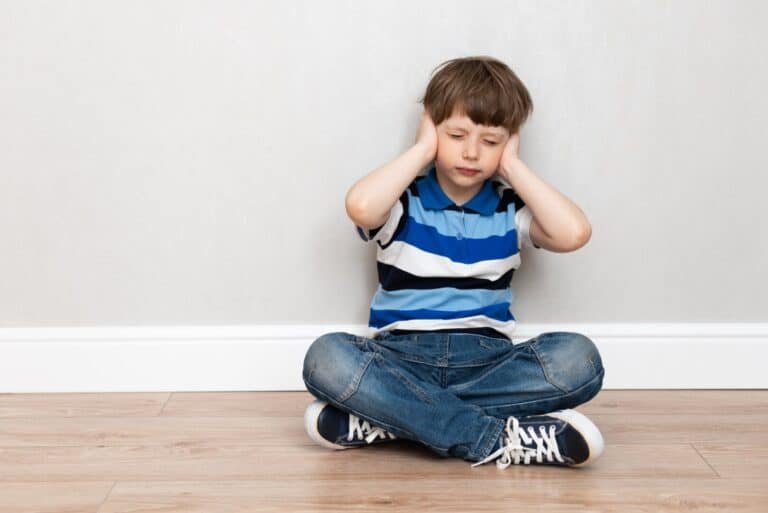The sensory area in autistic individuals may function differently compared to neurotypical people. Autistic people can experience increased or decreased sensory sensitivities in various areas, such as hearing, sight, touch, taste, and smell. These differences in sensory perception can affect their interaction with the environment and their ability to process sensory information. Below are some aspects of how the sensory area functions in autistic individuals:
Hypersensitivity: Autistic individuals may be hypersensitive to certain sensory stimuli, meaning they may perceive these stimuli as more intense or overwhelming compared to neurotypical people. For example, they may be extremely sensitive to loud noises, bright lights, or rough textures.
Hyposensitivity: On the other hand, autistic individuals can also be hyposensitive to some sensory stimuli, meaning they may require more stimulation in certain areas to register and process information. This can manifest as a lack of response or a muted response to sensory information, such as not reacting to pain or temperature.
Selective sensory stimulus: Some autistic individuals may focus their attention on specific sensory stimuli and have difficulty filtering out or ignoring irrelevant sensory information. This can make them feel overwhelmed or distracted in environments with a lot of sensory information, such as a noisy classroom or a crowded street.
Difficulties in sensory integration: Autistic individuals may have difficulties integrating and processing sensory information coming from different sources. This can affect their ability to coordinate and perform activities that require the involvement of multiple sensory systems, such as riding a bike or tying their shoes.
Self-stimulating behaviors: Autistic individuals may engage in self-stimulating behaviors, such as hand-flapping, body rocking, or finger-snapping, to regulate their sensory perception or manage stress and anxiety. These behaviors can provide a sense of calm and control over their sensory environment.
Tactile Perception
In autistic individuals, tactile perception may function differently compared to neurotypical people. Differences in tactile perception can affect the way autistics interact with their environment and how they process touch-related information. Below are some aspects of the functioning of the tactile sensory area in autistic individuals:
Tactile hypersensitivity: Autistic individuals may be hypersensitive to touch, meaning they may perceive certain tactile stimuli as more intense or overwhelming compared to neurotypical people. For example, they may feel discomfort or distress when wearing clothes with tags or seams, or when touched lightly or unexpectedly.
Tactile hyposensitivity: On the other hand, autistic individuals can also be hyposensitive to touch, meaning they may require more tactile stimulation to register and process information. This can manifest as a lack of response or a muted response to tactile stimuli, such as not reacting to pain or pressure.
Specific tactile preferences: Some autistic individuals may have specific tactile preferences and actively seek certain types of tactile sensations that they find pleasant or soothing. For example, they may prefer soft objects, such as a plush blanket, or enjoy deep pressure, such as that provided by a firm hug or a weighted blanket.
Difficulties in tactile discrimination: Autistic individuals may have difficulties discriminating between different tactile stimuli and recognizing objects or textures by touch. This can affect their ability to perform activities that require fine tactile skills, such as buttoning a shirt or manipulating small objects.
Tactile self-stimulating behaviors: Autistic individuals may engage in tactile self-stimulating behaviors, such as rubbing their hands, scratching surfaces, or repeatedly touching objects, to regulate their tactile perception or manage stress and anxiety. These behaviors can provide a sense of calm and control over their tactile environment.
Auditory Perception
Sound perception in autistic individuals may function differently compared to neurotypical people. These differences in auditory perception can affect the way autistics experience and process sound in their environment. Below are some aspects of the functioning of the auditory sensory area in autistic individuals:
Auditory hypersensitivity: Autistic individuals may be hypersensitive to sound, meaning they may perceive certain sounds as more intense or overwhelming compared to neurotypical people. For example, they may feel discomfort or distress when hearing loud noises, such as traffic, the sound of a hairdryer, or loud music.
Auditory hyposensitivity: On the other hand, autistic individuals can also be hyposensitive to sound, meaning they may require more auditory stimulation to register and process information. This can manifest as a lack of response or a muted response to auditory stimuli, such as not reacting to calls or environmental sounds.
Difficulties in auditory discrimination: Autistic individuals may have difficulties discriminating between different sounds or recognizing specific sounds in a noisy environment. This can affect their ability to focus on a conversation or task in the presence of background noise.
Specific auditory preferences: Some autistic individuals may have specific auditory preferences and actively seek certain types of sounds or music that they find pleasant or soothing. For example, they may prefer to listen to a specific song or sound on repeat or enjoy sounds of nature, such as bird songs.
Auditory self-stimulating behaviors: Autistic individuals may engage in auditory self-stimulating behaviors, such as humming, finger-snapping, or making noises with their mouth, to regulate their auditory perception or manage stress and anxiety. These behaviors can provide a sense of calm and control over their auditory environment.
Visual Perception
Visual perception in autistic individuals may differ from that of neurotypical people, affecting the way they experience and process visual information in their environment. Below are some aspects of the functioning of the visual sensory area in autistic individuals:
Visual hypersensitivity: Autistic individuals may be hypersensitive to visual information, meaning they may perceive certain visual stimuli as more intense or overwhelming compared to neurotypical people. For example, they may feel discomfort or distress with bright, flickering, or intense-colored lights.
Visual hyposensitivity: On the other hand, some autistic individuals may be hyposensitive to visual information, meaning they may require more visual stimulation to register and process information. This can manifest as a lack of response or a muted response to visual stimuli, such as not noticing changes in the environment or facial expressions.
Difficulties in visual processing: Autistic individuals may have difficulties processing complex visual information or discriminating between different objects or visual patterns. This can affect their ability to focus on a task or follow instructions involving visual information.
Specific visual preferences: Some autistic individuals may have specific visual preferences and actively seek certain types of visual stimuli that they find pleasant or soothing. For example, they may enjoy geometric patterns, specific colors, or moving images, such as rotating objects or the flow of water.
Visual self-stimulating behaviors: Autistic individuals may engage in visual self-stimulating behaviors, such as staring at bright or flickering objects, moving objects in front of their eyes, or waving their fingers in front of their field of vision. These behaviors can provide a sense of calm and control over their visual environment.
Olfactory Perception
The sense of smell in autistic individuals may be experienced differently compared to neurotypical people, affecting the way they process and react to odors in their environment. Here are some aspects of the functioning of the olfactory sensory area in autistic individuals:
Olfactory hypersensitivity: Autistic individuals may be hypersensitive to smells, meaning they can perceive certain odors as more intense or overwhelming than neurotypical people. This can lead them to experience discomfort or distress from smells that others might find normal or even pleasant.
Olfactory hyposensitivity: On the other hand, some autistic individuals may be hyposensitive to smells, meaning they may require more olfactory stimulation to register and process information. This can manifest as a lack of response or a muted response to olfactory stimuli, such as not noticing strong or unpleasant odors.
Specific olfactory preferences and aversions: Some autistic individuals may have very specific olfactory preferences and aversions, which can influence their choices and behaviors in everyday life. They may be drawn to certain smells and actively seek them out, while other smells may cause them discomfort or anxiety.
Olfactory self-stimulating behaviors: Autistic individuals may engage in olfactory self-stimulating behaviors, such as repeatedly smelling objects or their own hands. These behaviors can provide a sense of calm and control over their olfactory environment.
Taste Perception
The sense of taste in autistic individuals may be experienced differently compared to neurotypical people. These differences in taste perception can affect their food preferences and the way they interact with food. Below are some aspects of the functioning of the sensory area related to taste in autistic individuals:
Hypersensitivity to taste: Autistic individuals may be hypersensitive to taste, meaning they can perceive flavors more intensely than neurotypical people. This hypersensitivity can make certain flavors overwhelming or unpleasant, which can lead to a limited diet or avoidance of certain foods.
Hyposensitivity to taste: Some autistic individuals may be hyposensitive to taste, implying they may require greater taste stimulation to process and experience flavors. This could manifest as a preference for foods with intense or extremely spicy, salty, sweet, or bitter flavors.
Specific preferences and aversions: Autistic individuals may have specific preferences and aversions related to taste, which can affect their food choices and behaviors. These preferences and aversions may be consistent over time or change periodically.
Food texture: In addition to differences in taste perception, autistic individuals may also be sensitive to food textures. Texture can be an equally important factor in their food preferences and aversions. They may prefer foods with smooth and uniform textures or reject foods with mixed or granular textures.

Multiple Sensory Stimuli
The sensory experience in autistic individuals can be complex, and in some cases, it may seem as if they are experiencing multiple sensory stimuli at the same time. This phenomenon may be related to difficulty filtering and selectively processing sensory information, which can result in sensory overload. Below are some aspects related to this experience in autistic individuals:
Difficulty in sensory modulation: Autistic individuals may have trouble regulating sensory input and distinguishing between relevant and irrelevant stimuli. This can cause them to experience a greater amount of sensory information simultaneously, which can be overwhelming and disorienting.
Sensory integration: Sensory integration is the process by which the brain combines and organizes information from different senses to generate a coherent perception of the environment. Autistic individuals may have difficulties in this area, which could hinder the discrimination and proper processing of multiple sensory stimuli.
Sensory overload: The combination of hypersensitivity and difficulty in sensory modulation and integration can lead to sensory overload. Sensory overload may manifest as anxiety, discomfort, agitation, or even pain in response to stimuli that others might consider normal or tolerable.
Coping strategies: To manage this overwhelming experience, autistic individuals may develop various coping strategies. These can include seeking quiet and controlled environments, using noise-canceling headphones, employing sensory management objects such as fidget spinners, and implementing predictable routines and structures to minimize exposure to unpredictable stimuli.
![]()
Reactions to Sensory Issues
The reactions of autistic individuals to their sensory issues can vary widely, as each person experiences the autism spectrum differently. Here are some examples of how they might react to their sensory difficulties:
Avoidance: Some autistic individuals may avoid situations or environments that cause them sensory discomfort, such as noisy, crowded, or brightly lit places.
Withdrawal: In response to sensory overload, an autistic individual might withdraw socially, seeking a quiet and solitary space to recover and regulate their emotions.
Stereotypies: Repetitive behaviors, such as hand flapping, rocking, or tapping, can be a way for autistic individuals to self-regulate and manage their sensory difficulties.
Intense emotional reactions: Autistic individuals may experience anxiety, irritability, anger, or even pain due to sensory overload, which can result in an intense emotional reaction and, sometimes, meltdowns or “meltdowns.”
Fixation on specific stimuli: Some autistic individuals may find comfort in specific sensory stimuli, such as watching spinning objects, listening to particular sounds, or manipulating tactile objects.
Use of sensory objects or tools: Autistic individuals may use sensory objects or tools, such as fidget spinners, tactile toys, weighted blankets, or noise-canceling headphones, to help regulate and control their sensory environment.
Insistence on routines and structure: To minimize exposure to unpredictable and potentially problematic stimuli, autistic individuals may insist on following predictable routines and structures in their daily lives.
It is crucial to remember that each autistic individual is unique and that their reactions to sensory issues can vary. Understanding and addressing the sensory needs and difficulties of an autistic person can significantly improve their well-being and help them better cope with everyday challenges.












